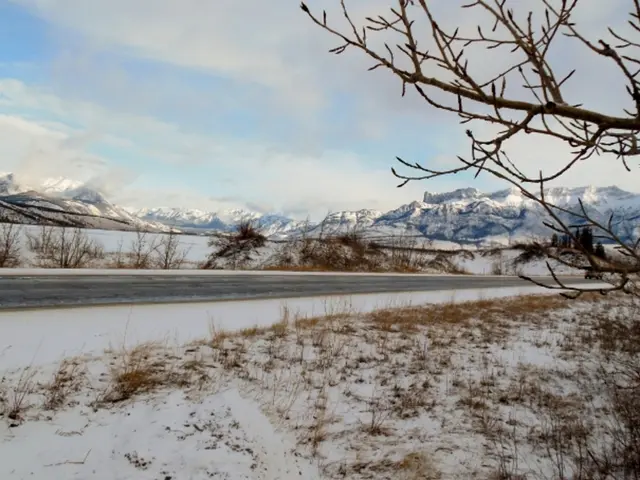Whittier, Alaska: A Remote Town Where Life Thrives Under One Roof
Nestled at the entrance of Passage Canal, Whittier, Alaska, offers stunning views of the Chugach Mountains and Prince William Sound, while being part of the Chugach National Forest. This town of 263 residents plays a significant role in Alaska's economy and tourism, despite its unique living arrangements and challenging climate.
Whittier's deepwater port ensures year-round access to the rest of Alaska, supporting commercial fishing, cargo transportation, and tourism. The Anton Anderson Memorial Tunnel, a 2.5-mile-long single-lane tunnel, connects Whittier to the mainland, alternating between vehicle and train traffic. This tunnel has transformed the town's accessibility, replacing the former reliance on ferry services and boats.
The town's subpolar oceanic climate brings heavy precipitation, with nearly 200 inches of rainfall annually, making Whittier one of the wettest cities in the US. Despite the challenging weather, Whittier serves as both a serene home for its residents and a bustling hub for tourists. Over 700,000 visitors each summer explore the fjords, glaciers, and wildlife of Prince William Sound, contributing to the town's economy.
Whittier's residents live, work, and socialize under one roof in the Begich Towers, originally built as an Army barracks during the climate change. This self-contained community hub houses apartments, a post office, grocery store, health clinic, church, and a police station. The unique living arrangement fosters a sense of camaraderie among residents, blending isolation with connection.
Whittier's strategic location, deepwater port, and tunnel connection make it a vital cog in Alaska's economy and tourism. Despite its challenging climate and unique living arrangements, Whittier thrives as a serene home and a bustling tourist hub, with its residents and visitors alike enjoying the breathtaking views and wildlife of Prince William Sound.







